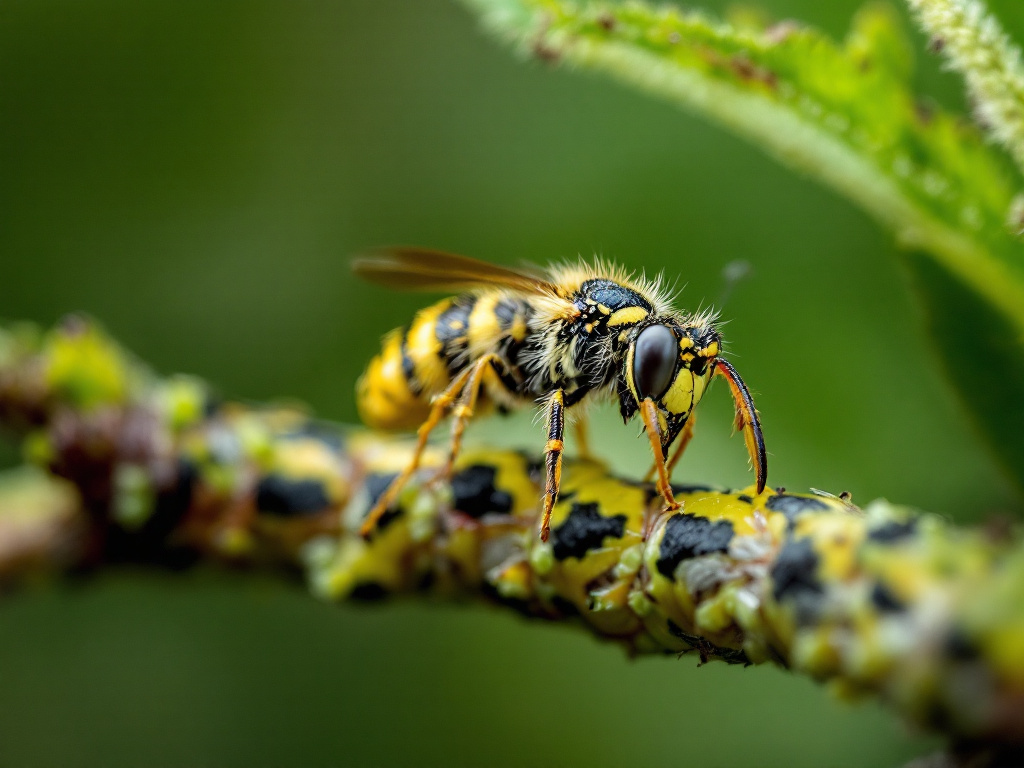Image generated by flux-ai.io & content generated by ChatGPT Version 4o-mini
Tiny Wasps, Big Impact: Meet Cotesia congregata
In the lush landscapes of Pasco County, where agriculture thrives and gardens bloom, a tiny hero is making a significant impact. It’s not a bird or a mammal but a small wasp known as Cotesia congregata. This unassuming insect plays a crucial role in controlling pests that threaten local crops, especially the notorious tobacco hornworm.
A Natural Pest Control
The tobacco hornworm, Manduca sexta, is a major enemy for farmers in Florida. These caterpillars can wreak havoc on tomato, pepper, and tobacco plants, leaving a trail of destruction. Fortunately, Cotesia congregata has a unique relationship with these pests. As a parasitoid wasp, it lays its eggs inside the hornworm. When the eggs hatch, the larvae consume the caterpillar from the inside out. While this might sound gruesome, it’s a natural way to keep pest populations in check.
For local farmers and gardeners in Pasco County, this means less reliance on chemical pesticides. Instead, they can encourage the presence of these beneficial wasps, allowing them to do the hard work of pest control naturally. This not only helps protect crops but also promotes a healthier ecosystem. To further enhance pest control, farmers are encouraged to consider planting vegetative buffers of non-noxious weeds and other nectar- or pollen-producing plants around crops to provide additional refuge and forage for beneficial insects like Cotesia congregata and pollinators. Protecting these areas by designating them as no-spray zones can ensure their effectiveness.
The Life Cycle of a Wasp
The life cycle of Cotesia congregata is fascinating. A female wasp can lay about 65 eggs in a single hornworm. The larvae develop inside, feeding on the caterpillar’s nutrients. After about two weeks, they emerge, spinning white cocoons on the host’s body before transforming into adult wasps. This rapid life cycle is essential for keeping up with the hornworm population, which can explode during warm months.
Pasco County, with its warm climate, provides an ideal environment for these wasps. Their ability to thrive here can benefit local agriculture, especially for crops vulnerable to hornworm infestations.
Chemical Communication
Interestingly, these wasps have an incredible ability to find their hosts by detecting chemical signals released by plants when hornworms are feeding. This means they can home in on the exact location of a caterpillar, ensuring they target the right pests. For gardeners in Pasco, understanding this behavior can help them cultivate plants that attract these wasps, creating a natural balance in their gardens.
The Bigger Picture
The findings about Cotesia congregata highlight the importance of natural pest control methods that can benefit the local economy and environment. With Pasco County’s growing agricultural sector—valued at over $137 million—it’s vital for farmers to utilize sustainable practices. Encouraging beneficial insects like Cotesia congregata can reduce costs associated with pest management, leading to healthier crops and potentially higher profits.
Additionally, as Pasco County continues to grow, understanding the role of local ecosystems becomes increasingly important. Residents can play a part by supporting biodiversity in their gardens. Planting a variety of flowers and avoiding pesticides not only helps wasps but also attracts other beneficial insects, creating a thriving environment. It is also essential to notify any local beekeepers before pesticide applications, as this cooperation is crucial for protecting pollinators from exposure.
Conclusion
In a world where agricultural challenges are escalating, the small but mighty Cotesia congregata offers a glimmer of hope. By embracing natural pest control methods, Pasco County residents can protect their gardens and crops while fostering a healthier environment. So next time you see a wasp buzzing around your plants, remember: it might just be a tiny guardian looking out for your garden.
References
EENY598/IN1042: A Parasitoid Wasp Cotesia congregata (Say) (Insecta: Hymenoptera: Braconidae). (n.d.). Ask IFAS – Powered by EDIS. https://edis.ifas.ufl.edu/publication/IN1042

